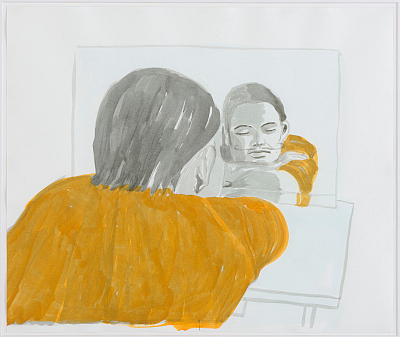In collaboration with the Centre Georges Pompidou in Paris and The Drawing Center in New York, De Pont is presenting an exhibition of the drawings of the German artist Rosemarie Trockel (Schwerte, 1952). In 1993 Rosemarie Trockel was the first artist to have a solo exhibition at De Pont. She showed her ‘knitted paintings’, and already at that point there was a wish to make a more extensive presentation of her work. Following the acquisition and presentation of the special project Kinderspielplatz (1999), the work on paper is now the main focus of this exhibition. In a broad selection, roughly one hundred drawings from a period of almost twenty years are being displayed. Trockel frequently returns to certain themes, and her work reflects great imagination and humor. The exhibition is accompanied by the extensively illustrated catalogue of the Centre Pompidou, which contains essays by Jonas Storsve and Dieter Koepplin. (limited availability, Dfl. 47,50).
The versatile oeuvre of Rosemarie Trockel is still relatively unknown, despite her considerable international reputation. An exception to this is the group of works referred to as Strikbilder, the knitted paintings with which she made a name for herself during the eighties and one of which, the work Cogito, ergo sum (1988), can be found in De Pont’s collection. While her male colleagues were creating a stir with the ‘new painting’, Trockel deployed the knitting machine for her ironic commentary. A similar type of statement regarding her position as a woman artist is also expressed in her works with enameled stovetops, which she presents as austere, geometric sculptures reminiscent of Minimal Art.
Aside from producing these works and countless other sculptures, installations, films and videos, Trockel has always drawn. Jonas Storsve, curator at the Centre Pompidou and compiler of the exhibition, writes the following in his essay: “Drawing (...) is perhaps the medium in which Rosemarie Trockel expresses herself with the greatest ease and the greatest freedom and in which the interpretation of her work requires the least effort. The major themes emerge: transformation, metamorphosis, mutation, all of the interim stages, fertilization.
